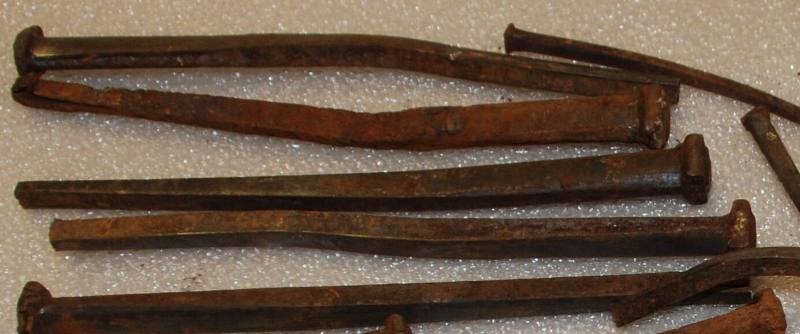Nail
Object number2007.56.37 a-e
Date1750-1910
MediumSteel
Credit LineHeinz History Center Collection
DescriptionFive (5) cut square nails of differing sizes.Dimensions(a) Length: 6.125 ; Width: .5(b) Length: 6.125 ; WIdth: .625
(c) Length: 4 ; WIdth: .5
(d) L: 3.5 ; W: .25
(e) L: 3.325 ; W: .25
Historical NotesFound in collection. The cut nail made its appearance in the mid-1700's. It would not be until the middle-1800's that cut nails began dominating the marketplace. Cut nails are not actually "cut"--they are sheared from steel plate that is the thickness of the nail shank. Although routinely referred to as "square nails", the cutting machine tapers the nail shank as it is sheared from the steel plate. A second machine forms the head of a cut nail. With the cut nail, two sides are parallel because they represent the thickness of the plate they were sheared from. Cut nails could be manufactured much faster than hand-forged nails. As the process was mechanized, the cost per nail was less. However, cut nail factories employed operators and attendants for each machine so the process was still labor-intensive. Cut nails had their heyday from about 1820 to 1910, the advent of the wire nail.
Subjects
On View
Not on viewc. 1894
1755
c. 1755
1890-1899












